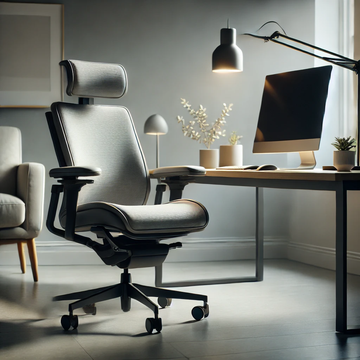Why Ergonomic Office Chairs Matter
Let's face it—spending hours at a desk can be hard on your body. How many times have you found yourself shifting uncomfortably, or worse, feeling that nagging back pain after a long day at work? We’ve all been there. Finding the right office chair isn’t just about luxury; it’s about investing in your comfort and health. An ergonomic office chair can make a huge difference, turning your workspace into a haven of productivity and ease. Imagine not having to constantly adjust your seat or stretch out your back—sounds good, doesn’t it?
Step 1: Understanding Ergonomics
Before we dive into the specifics, let's chat about what ergonomics actually means. It's not just a fancy term but a whole science dedicated to designing tools and environments that fit our bodies. In the context of office chairs, this means creating seats that support your posture, keep you comfortable, and help you work efficiently.
Health Benefits of Ergonomic Office Chairs
- Reducing Back Pain: We all know how frustrating back pain can be. Ergonomic chairs come with built-in lumbar support that cradles your lower back. This can alleviate pressure and keep your spine in a healthy alignment. It’s like having a personal back masseuse but without the extra expense.
- Preventing Neck and Shoulder Strain: Ever find yourself hunched over, craning your neck to see your screen? Adjustable headrests and armrests are a game-changer. They allow you to position yourself comfortably, so you’re not straining your neck or shoulders. Trust me, it makes a world of difference.
- Improving Circulation: An ergonomic chair isn't just about comfort; it's also about health. Features like adjustable seat depth and tilt mechanisms can help you maintain good posture and improve blood flow. No more feeling like your legs are going numb after a long meeting!
Impact on Productivity
- Comfort and Focus: Think about how much easier it is to focus when you're comfortable. A well-designed chair reduces the need to shift around or fidget, so you can concentrate on what matters—your work.
- Enhancing Work Efficiency: If you’re not constantly adjusting your chair or dealing with discomfort, you’ll find you get more done. Ergonomic chairs support a range of sitting positions, which means you can stay productive even during long hours.
- Long-Term Benefits: Investing in an ergonomic chair can also mean fewer sick days and improved job satisfaction. When you’re comfortable and pain-free, you’re more likely to enjoy your work and stay healthy.
Features to Look for in an Ergonomic Chair
- Adjustable Seat Height: Your chair height must match your desk to ensure proper alignment. This simple adjustment can make a huge difference in your comfort.
- Lumbar Support: Look for a chair with adjustable lumbar support that fits the curve of your lower back. It’s crucial for preventing back pain and supporting good posture.
- Adjustable Armrests and Headrests: These features let you customise the chair to fit your body. Being able to adjust them can prevent strain on your neck and shoulders.
- Seat Depth and Tilt Mechanisms: A chair with adjustable seat depth and tilt can accommodate different sitting positions and help maintain proper posture.
Choosing the Right Ergonomic Chair for Your Needs
- Assessing Your Work Environment: Think about your workspace. Is your desk height fixed, or do you have flexibility? Your chair should complement your desk setup and work style.
- Budget vs. Quality: Yes, a high-quality ergonomic chair can be an investment, but consider it a long-term benefit. The comfort and support can outweigh the initial cost.
- Trying Before You Buy: If possible, test out a chair before buying it. Everyone’s body is different, and what works for one person might not work for another.
Maintaining Your Ergonomic Chair
- Regular Adjustments: Keep your chair set to your preferred settings. As you change positions or adjust your desk, make sure your chair supports you correctly.
- Cleaning and Upkeep: Regular cleaning keeps your chair in good shape and prolongs its life. Check for wear and tear and make sure everything’s working smoothly.
- Checking for Wear and Tear: If you notice any issues, like squeaks or a wobbly seat, address them promptly to keep your chair functioning well.
Ready to Upgrade Your Office Chair?
There you have it—a guide to why ergonomic office chairs matter and what to look for when choosing one. Investing in a good office chair isn’t just about luxury; it’s about taking care of your health and boosting your productivity. So, if you’re tired of that nagging back pain or struggling to stay comfortable at your desk, it might be time for an upgrade. Your body—and your work—will thank you!




